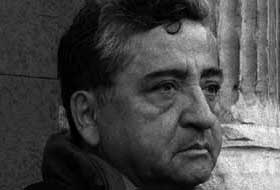Conrado Dominguez
Artworks
Biography
Exhibitions
About the artist
 |
Conrado Dominguez' Oeuvre takes its bearings from the cubist tradition and its later variations and may be seen as a modification of this artistic style. Sculptors such as Henry Moore and Constantin Brancusi, painters such as Rufino Tamayo, Pedro Coronel, Juan Gris and, last but not least, Pablo Picasso provided inspiration for his paintings and graphic works. As with the founders of cubism, the interplay between individual geometrically or organically formed picture elements bear only scant resemblance to the subject. On the contrary, they represent pure form. In his paintings Conrado Dominguez achieves an extraordinary transparency, often with a vitreous effect, due to the apparent emanation of a light source coming from the picture itself. As in cubism, several perspectives are blended simultaneously on the picture surface, producing a polyvalent aspect for the viewer, which is intensified by the unusual transparency and the accompanying penetration of floodlight. Conrado Dominguez combines the language of European cubism with the painting tradition of his native country. Traditionally, Mexican art is colourful and cheerful. While cubism remained trapped in its origins, in a reduced colour palette, Dominguez' paintings are immersed in sparkling, coloured light, thereby extending the cubist formula and enriching it with colour. Through the use of light with such virtuosity, his pictures achieve a singular colourful brilliance. The colour areas sometimes appear detached from the canvas, as if floating, and look like kaleidoscopes. The view of the beholder is arrested by aspects of objectivity, for example, by a hand, by a landscape impression or by the sun. By overlapping, sequencing or by reflection or occlusion of the individual picture elements and through the brilliant, crystalline use of light, his paintings appear to be in constant movement.
|